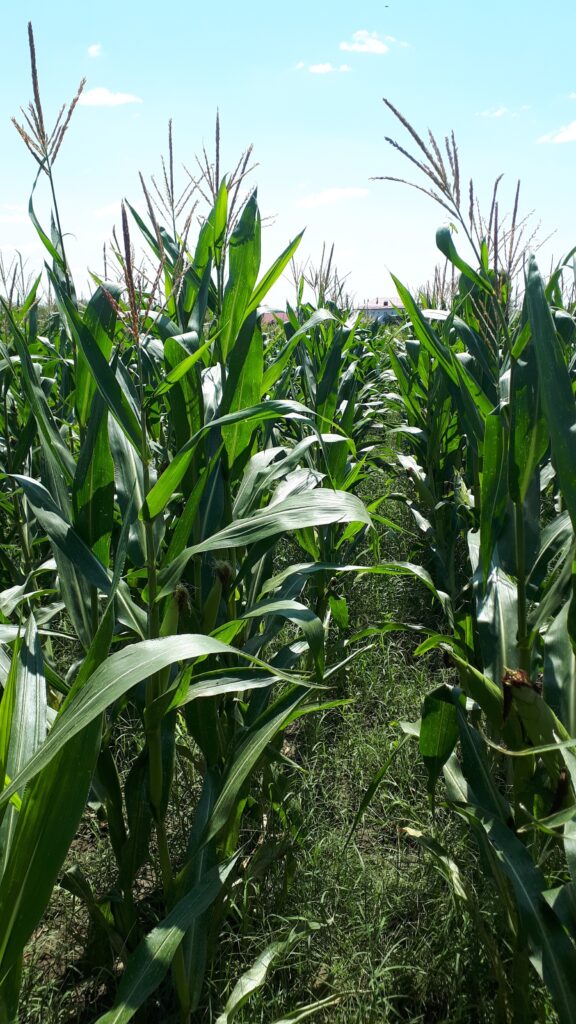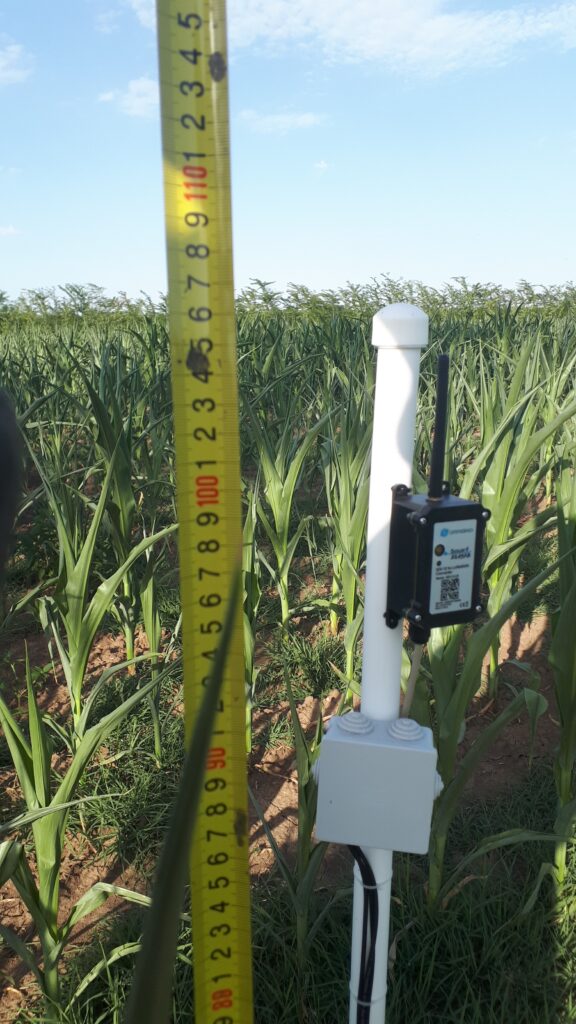ESA carries out airborne and ground-based campaigns to test and validate new technologies and scientific methods before they are used in space missions. These campaigns are essential for ensuring that the instruments and techniques will work correctly in the challenging environment of space. By testing these on Earth, ESA can identify and fix any issues early on, which saves time and resources.

TX, RX1 and RX2 antennae frontends mounted on the 2D displacement system (rotating arm retracted to platform). (Terrasigna)
The T-SAR campaign is an exciting initiative aiming to improve our understanding of Earth’s surface, particularly in terms of soil moisture and vegetation.
This campaign started back in the summer of 2024 and uses an instrument called T-SAR, which was developed for ESA by Terrasigna in Romania. Scientists carried out measurements in agricultural fields near Bucharest focusing on soil moisture and plant health parameters.

Crops in July 2024. (Terrasigna)
The instrument was used to collect valuable data that can help us better understand and improve the modelling of land-surface scattering properties, crucial for the development of potential future Earth observation missions, such as the Earth Explorer 12 Hydroterra+ concept. Hydroterra+ is one of four mission concepts competing to be ESA’s twelfth Earth Explorer mission – the proposal is to fly a geosynchronous synthetic aperture radar.
If selected, Hydroterra+ would be placed in geosynchronous orbit, which is unusual for an Earth science radar mission. From this position, the satellite’s C-band synthetic aperture radar would deliver data twice a day over the Mediterranean and northern Africa to understand rapid processes tied to the water cycle and tectonic events in these regions.

Sensor array mounted on the tower. (ESA–Julia Kubanek)
The advantages of placing this type of radar in geosynchronous orbit is that it remains fixed relative to Earth – it orbits Earth at the same speed as Earth rotates below. This allows the same area to be monitored continuously. It can also cover a large area, making it useful for monitoring weather patterns and large-scale environmental changes.
The T-SAR campaign allows, for example, this new remote-sensing concept to be tested in its initial phases of the development.
What is the T-SAR instrument?
T-SAR stands for Tomographic C-band Synthetic Aperture Radar infrastructure. It’s a sophisticated radar system that can capture detailed images of Earth’s surface. By using T-SAR, scientists can measure soil moisture and vegetation parameters in agricultural fields under controlled conditions. These data are essential for developing future mission concepts, which aim to provide high-resolution, frequent observations of Earth’s surface.

Plant height on 28 June 2024 (100 cm) and soil moisture probe. (Terrasigna)
Why is T-SAR Important?
The T-SAR campaign helps us understand how radar backscatter changes over time, which can provide insights into varying soil moisture values. Additionally, it allows us to study the influence of environmental factors like wind and rain on these measurements. The high temporal resolution of T-SAR data provides a detailed view of the diurnal cycle, helping us understand how soil moisture and vegetation change throughout the day.
Campaigns like T-SAR are also valuable to foster collaboration with local researchers, engineers, and institutions in the host country.
In Romania, this means working with the University of Agronomic Sciences and Veterinary Medicine of Bucharest and Terrasigna, a local Romanian company developing and testing new technologies. This collaboration helps build local expertise and knowledge in space-related research fields, which can be beneficial for the country’s scientific and technological development.
For a company like Terrasigna, participating in these campaigns can provide valuable experience and exposure to cutting-edge technologies. It allows them to demonstrate their capabilities, gain insights from working with international experts, and potentially secure future contracts or partnerships. This support helps strengthen the local space industry and contributes to strengthening Romania’s role in the European space sector.

Soil and leaf sensors positioned in a field. (Terrasigna)
Campaign highlights
The T-SAR instrument was used to take measurements during the growing season in 2024. Due to the very hot summer with temperatures over 40 °C for more than a week, a new water source had to be drilled to ensure irrigation and to prevent the crops from dying out. Another measurement season is planned this summer, 2025.

Establishing the site of a new well in May 2025. (Terrasigna)
The T-SAR campaign involves a series of measurements conducted in parallel with in situ data collection to ensure the validation of radar results, ensuring accuracy and scientific reliability. The campaign also prepares us for future more advanced capabilities, such as bistatic and full-polarimetric measurements, essential for upcoming missions like ESA’s Earth Explorer Harmony mission and Sentinel-1 Next Generation.
In summary, the T-SAR campaign is a key step in the development of future space missions, helping to ensure their success and maximise their scientific return.
Looking ahead
The data collected during the T-SAR campaign and corresponding results will directly support the Earth Explorer 12 candidate Hydroterra+. In addition to advancing our scientific understanding, the campaign supports the development of new technologies and mission concepts that will improve how we observe and understand our planet.
Stay tuned for more updates on the T-SAR campaign and its role in shaping the future to Earth observation!
Post from Julia Kubanek (ESA)








Discussion: no comments